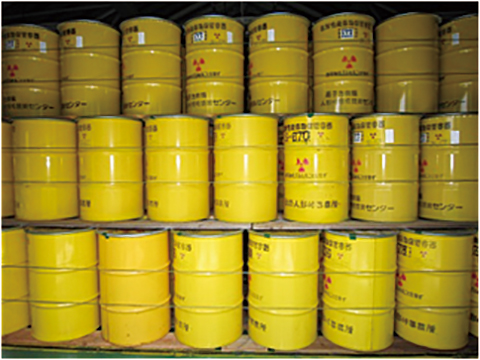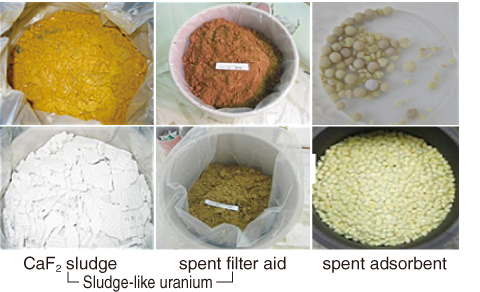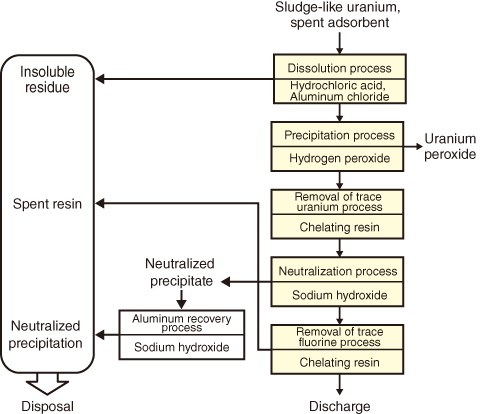
Fig.8-6 Drums for storing sludge-like uranium-bearing waste

Fig.8-7 Sludge-like uranium and the spent adsorbent

Fig.8-8 Process using hydrochloric acid to separate uranium from sludge-like uranium-bearing waste
Technologies for producing uranium (U) hexafluoride were developed from 1964 to 2001 at the Ningyo-toge Environmental Engineering Center. Consequently, approximately 1500 t of uranium-bearing waste was generated and safely stored in drums (Fig.8-6).
Some waste is in a pellet form, and other wastes have a high fraction of insoluble component, U, or hazardous elements (Fig.8-7). To remove U and hazardous elements from various uranium-bearing wastes, we proposed the hydrochloric acid (HCl) process (Fig.8-8). U is dissolved in HCl (dissolution process) and separated as a precipitate (precipitation process) by using hydrogen peroxide. Trace U and hazardous materials remaining in the solution are removed by using a chelating resin that absorbs the ions that need to be removed. Aluminum chloride is added in the solution during the dissolution stages to decrease the concentration of impurities mixed in with the separated U. The aluminum is then selectively recovered and reused. The insoluble residue, the spent resin, and the neutralized precipitate should be disposed of as a radioactive waste. As part of the present study, we investigated whether the process can be used for CaF2 sludge and the spent filter aid. Approximately 90% of the U was separated at the precipitation stage. Furthermore, highly concentrated U (60–70wt%), which might be useful as a resource, was separated. The study confirmed that the concentration of U in solution dropped below the discharge standard concentration and that, by removing trace U, the concentration of U in the neutralized precipitate became sufficiently low.
The investigation results confirm that the majority of the U in CaF2 and the spent filter aid is separated and that U concentration becomes sufficiently low to be disposed of. We will investigate whether the process can be used for other sludge and spent adsorbents.